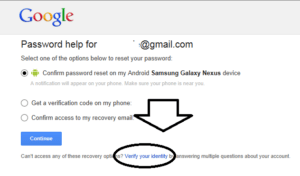How to Recover From a Google Algorithm Update
How to Recover From a Google Algorithm Update? Google algorithm updates can have a significant impact on website rankings and organic visibility. They can also affect the traffic of a website.
It’s important to remember that a negative shift following an algorithm update doesn’t necessarily mean that you have been penalized. Google’s core updates chiefly deal with aspects of a web page’s relevance and authority.
Features of Recover From a Google Algorithm Update
- It’s widely accepted that Google releases multiple algorithm updates every day. These can cause a ripple effect on search engine results pages (SERPs), either leaving some sites behind or sending others into turmoil. It’s also often misinterpreted that these changes are a sign that a website has been penalized – however, this is not necessarily the case.
- While a SERP change may be the result of an algorithm update, it can also be due to something a website owner or blogger has done. This is not to be confused with a Google penalty, which is when a site is manually penalized for a breach in webmaster guidelines.
- The first step to recovering from a Google core update is to fully understand how the algorithm has been changed and why. This means reviewing SEO analytics tools, monitoring the opinions of SEO thought leaders & reading Google’s official announcements.
- Once a clear understanding has been established, the next step is to review your current SEO practices and ensure they are up-to-date with Google’s evolving standards. This can be a lengthy process and requires a lot of time, patience and resource investment.
- Depending on how far you’ve fallen following the algorithm change. It can take months to see an upward trend in your rankings and traffic. However, if you’re patient and have the right strategies in place, recovery from a Google algorithm update is definitely achievable!
1. Conduct a thorough website audit
If you’ve noticed a drop in organic traffic or search rankings, it may be time to conduct an SEO audit. An audit can help identify any issues that need to be addressed and provide a roadmap for recovery.
An audit should include a thorough review of the website’s content, structure, and technical elements. It should also evaluate the user experience and address any areas that could be improved. For example, if your site is not optimized for mobile users, this will negatively impact your rankings. Also, be sure your website is secure by utilizing HTTPS. Google gives preference to sites that are secure.
It’s important to remember that recovery from core algorithm updates can take time and effort. But, by following these tips. You can ensure that your site is in line with Google’s quality guidelines and provide relevant and valuable information to users.
2. Conduct a competitive analysis
Google’s algorithm updates are designed to improve search results by rewarding websites that prioritize user experience and provide valuable content while penalising those who engage in unethical or spammy practices. It’s important to understand the purpose and impact of these changes to adapt your website and remain competitive in the digital landscape.
A sudden and significant drop in organic traffic can be a clear sign that your site has been hit by an algorithm update. You should also pay attention to fluctuations in keyword rankings. These can indicate that a specific update has been implemented.
Conducting a competitive analysis can help you identify your strengths and weaknesses, as well as opportunities for improvement. Using SEO tools like Ahrefs, you can analyze your competitors and their strategies to find out what steps they’ve taken to adapt to the latest algorithm updates. This can give you an edge over your competitors and help you recover from any losses caused by core updates.
3. Conduct a technical audit
Google’s algorithm updates are designed to ensure that the most relevant and high-quality search results appear at the top of searches. This helps users find the information they’re looking for faster and more easily. While also weeding out websites that use manipulative tactics to rank higher.
A technical SEO audit is a deep dive into your client’s website. Inspecting every page for issues that may impact site performance. It’s a great way to identify and prioritize the most important problems that need to be addressed and to create a timeline for addressing them.
A robust technical audit tool like AgencyAnalytics combines data from various SEO tools to provide a complete picture of your client’s site health. It also includes Core Web Vitals analysis, which evaluates a page’s loading speed, interactivity, and visual stability. Addressing these issues can help your clients’ pages rank better and avoid getting penalized during a core update.
4. Conduct a content audit
During a content audit, you should catalogue every piece of content you have, including blog posts and social media content. This gives you a clear picture of what you’re working with so you can decide whether it needs to be changed, repurposed, or removed altogether.
The content audit process can be time-consuming. However, it is essential for a website that has been negatively affected by an algorithm update. Without a proper content audit, it will be difficult to understand the impact of the update and how to recover.
Many websites have experienced massive traffic dips after Google core algorithm updates. For YMYL sites such as healthcare, legal, or financial websites, these declines can be devastating. However, it is possible to recover from core algorithm updates if you are prepared and professional. This includes being transparent about your site’s content and ditching any hacks. This is important because Google is constantly assessing your website and may penalize it if they think you’re spammy.
5. Conduct a link-building audit
The first thing you need to do is figure out whether your website has been negatively affected by a core algorithm update. Be aware that a core algorithm change does not automatically translate into an actual penalty – Google only issues penalties when a website is deemed to be violating their guidelines.
A link audit can help you identify any unnatural or spammy links that may be hurting your website. At the very least, these unnatural links will prevent your site from ranking as well as it could – in the worst case, they may trigger a Google penalty.
Keeping track of your website’s organic search performance can be quite a hassle, especially when you have several websites. However, Rank Math has made it easy to keep an eye on your progress by providing you with SEO email reports that will alert you of any significant changes in your organic search traffic.
6. Refine your SEO strategy
It’s important to know that regaining search visibility after an algorithm update is possible with the right resources and strategy. Zero Gravity Marketing’s digital experts are here to help you navigate this process and turn a potential setback into a stepping stone towards greater SEO success.
Recovery from Google core updates requires patience and adherence to SEO best practices. It’s also important to understand that the changes may not be immediate, as it can take weeks or even months for core algorithm updates to fully affect search results.
The key to a strong SEO strategy is producing high-quality content that caters to user intent. This includes ensuring that your content is accurate, well-written, unique, and authoritative. It’s also important to regularly review and improve your content, making sure it is up-to-date and comprehensive. This will help to ensure that your content meets Google’s quality guidelines.
Final words
One day your website might rank high for all the right keywords. And then the next you’re nowhere to be seen. A Google penalty can be extremely debilitating. So it’s important to understand how they work and what signs to look out for.


